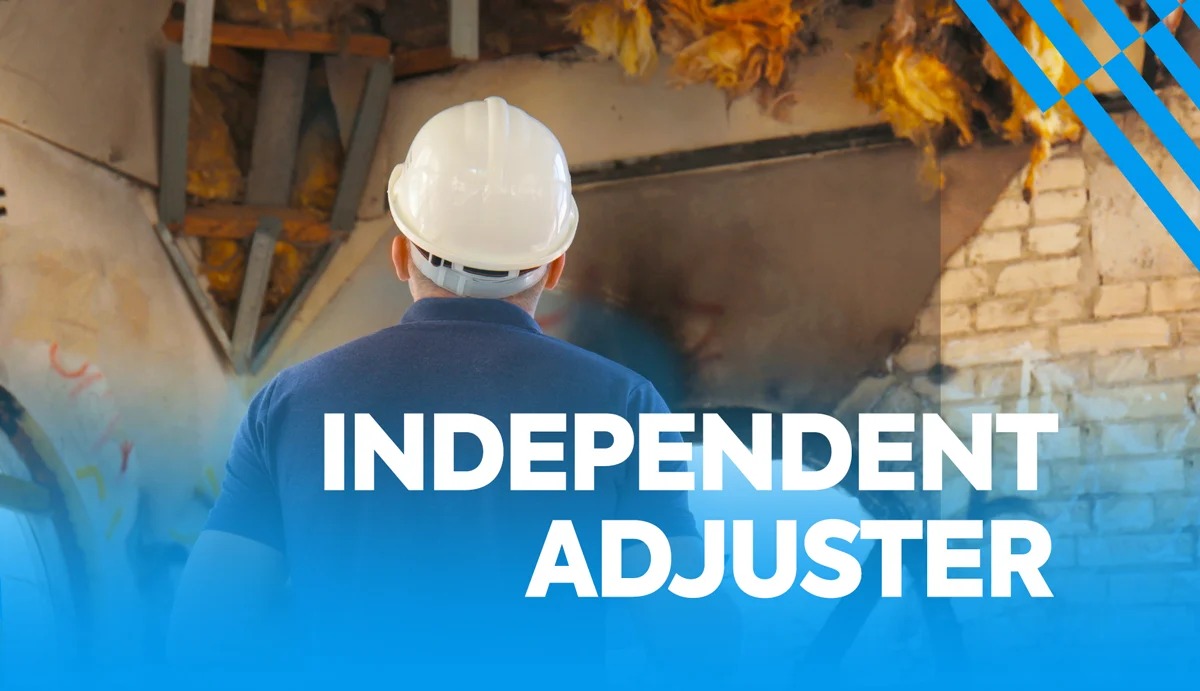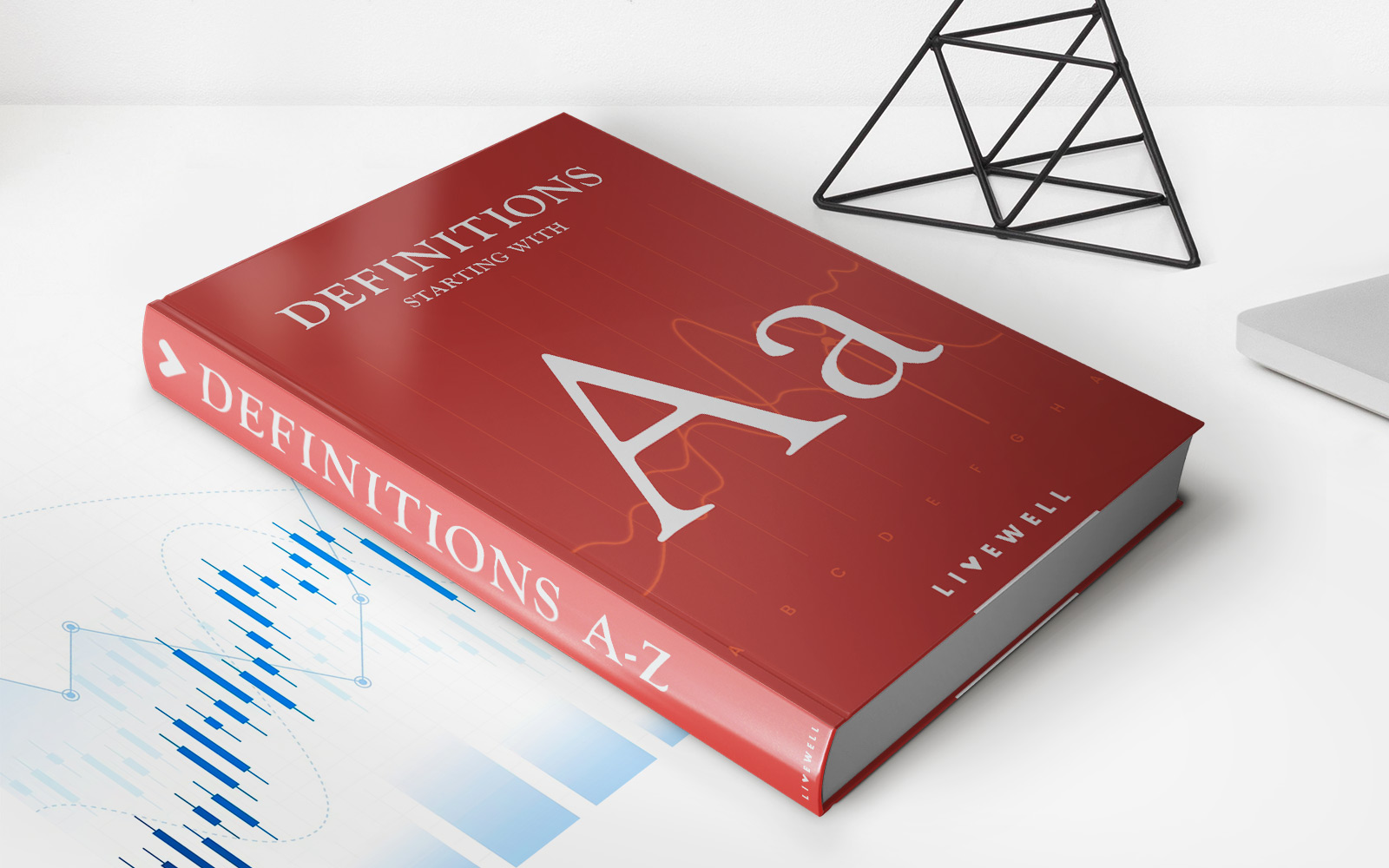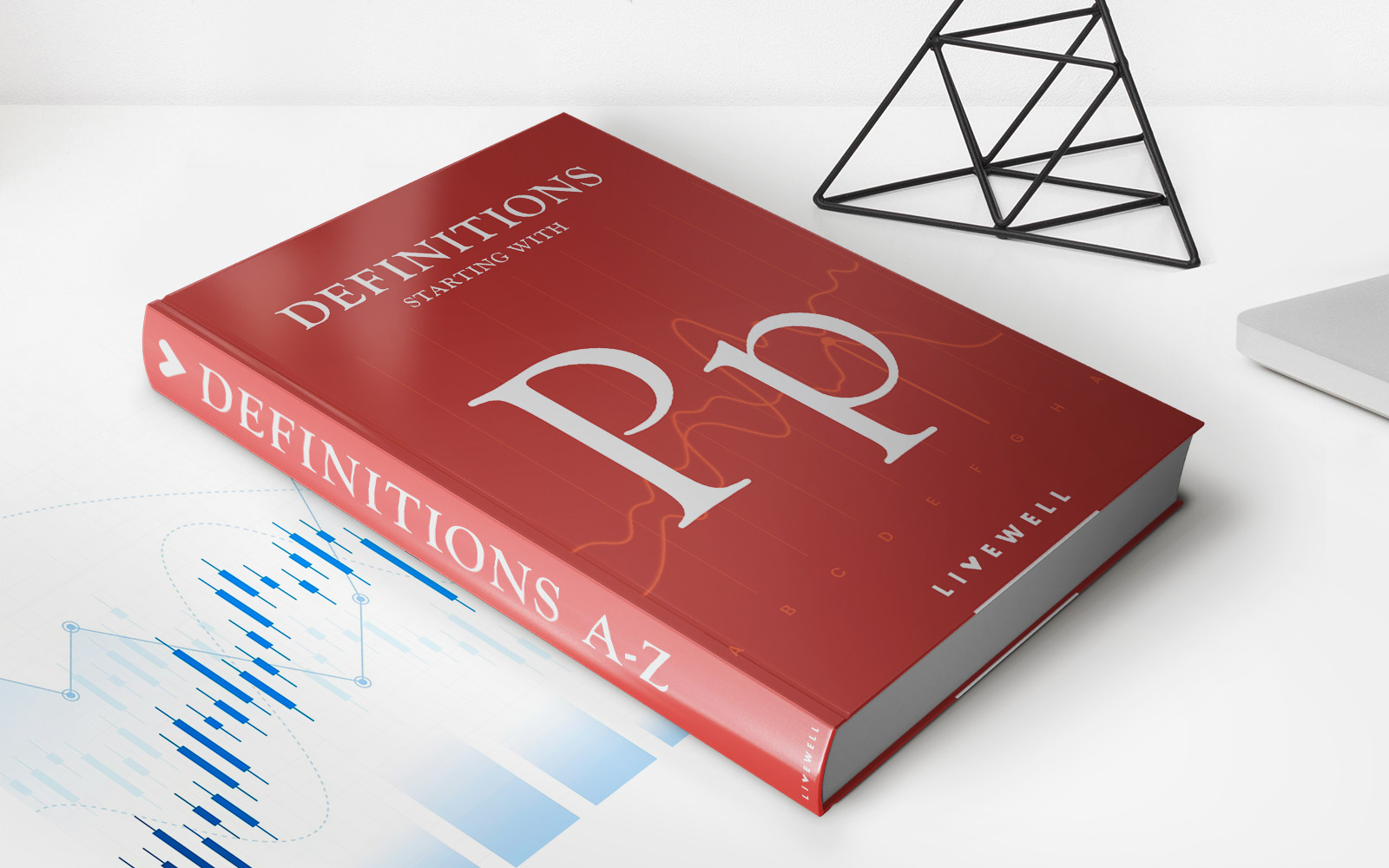

Finance
How To Talk To An Insurance Adjuster
Modified: February 21, 2024
Learn how to effectively communicate with an insurance adjuster and navigate the finance aspects of your claim. Expert tips and strategies for a successful settlement.
(Many of the links in this article redirect to a specific reviewed product. Your purchase of these products through affiliate links helps to generate commission for LiveWell, at no extra cost. Learn more)
Table of Contents
- Introduction
- Understanding the role of an insurance adjuster
- Preparing for the conversation
- Initiating contact with the insurance adjuster
- Establishing rapport and building trust
- Providing accurate and detailed information
- Communicating your perspective effectively
- Asking the right questions
- Clarifying insurance terms and jargon
- Presenting evidence and supporting documentation
- Negotiating a fair settlement
- Dealing with disputes or disagreements
- Wrapping up the conversation
- Conclusion
Introduction
When it comes to navigating the complex world of insurance claims, one of the most crucial interactions you’ll have is with an insurance adjuster. An insurance adjuster is the person responsible for evaluating your claim, determining coverage, and ultimately, offering a settlement that aligns with the terms of your policy.
While many people may feel intimidated or overwhelmed by the prospect of speaking with an insurance adjuster, it’s essential to approach these conversations as opportunities to advocate for yourself and secure a fair outcome. With a solid understanding of the process and some effective communication strategies, you can confidently engage with an insurance adjuster and ensure your claim receives proper consideration.
In this guide, we’ll explore how to effectively communicate with an insurance adjuster, from preparing for the conversation to negotiating a fair settlement. By following these tips, you’ll be better equipped to navigate the claims process, provide accurate information, and achieve the best possible outcome for your situation.
Understanding the role of an insurance adjuster
Before diving into the intricacies of communicating with an insurance adjuster, it’s important to have a clear understanding of their role and responsibilities. An insurance adjuster works on behalf of the insurance company to investigate and evaluate claims. Their main objective is to assess the extent of the loss or damage and determine the appropriate amount to be paid out as a settlement.
An insurance adjuster may specialize in different areas, such as property and casualty claims, auto insurance claims, or personal injury claims. They are typically knowledgeable about the specific policy terms and conditions, industry standards, and legal requirements regarding insurance claims.
It’s essential to recognize that an insurance adjuster’s primary duty is to protect the interests of the insurance company. While they have a responsibility to fairly assess your claim, their ultimate goal is to minimize the amount the insurance company pays out. Understanding this dynamic can help you approach conversations with an insurance adjuster with a realistic perspective.
Insurance adjusters are trained professionals who have experience handling various types of claims. They may collect evidence, review documentation, interview witnesses, and consult experts to gather all relevant information needed to make an accurate settlement offer. It’s important to remember that they are not your adversary, but rather a representative of the insurance company responsible for assessing your claim.
By acknowledging the adjuster’s role and being aware of their motivations, you can effectively navigate the claims process. This understanding allows you to be proactive in providing necessary information, presenting evidence, and advocating for a fair resolution.
Preparing for the conversation
Before engaging in a conversation with an insurance adjuster, it’s crucial to adequately prepare to ensure a smooth and productive interaction. Taking the time to gather the necessary information and documents will not only help you present a strong case but also demonstrate your seriousness and professionalism.
Here are some essential steps to take when preparing for the conversation:
- Review your insurance policy: Familiarize yourself with the terms, coverage limits, and any exclusions or conditions that may apply to your claim. Understanding your policy will help you communicate effectively and know what to expect from the process.
- Document the incident: Compile any relevant documentation, such as accident reports, photos, medical records, or repair estimates. This evidence will support your claim and strengthen your position when discussing the details with the adjuster.
- Organize your records: Keep all relevant paperwork and records organized and easily accessible. This includes any correspondence with the insurance company, receipts for expenses related to the incident, and any other relevant documentation that may be requested by the adjuster.
- Prepare a summary of events: Write down a detailed account of what happened leading up to and during the incident. Be sure to include dates, times, locations, and any other relevant information that will help the adjuster understand the sequence of events.
- Research similar cases: If there have been similar cases or precedents that support your claim, gather information about them. This knowledge can give you a better idea of what to expect and provide additional evidence to support your position.
- Set realistic expectations: While it’s important to advocate for a fair settlement, it’s also crucial to have realistic expectations. Research the potential value of your claim based on similar cases or industry standards, and be prepared for potential negotiation or compromise.
By taking these preparatory measures, you will be well-equipped to engage in a productive conversation with the insurance adjuster. Your thoroughness and preparedness will demonstrate your commitment to the claims process and increase the likelihood of a successful outcome.
Initiating contact with the insurance adjuster
Once you have prepared all the necessary documentation and gathered the information relevant to your claim, it’s time to initiate contact with the insurance adjuster. This step is crucial as it sets the tone for the rest of the conversation and establishes a professional and cooperative relationship.
Here are some tips for effectively initiating contact with the insurance adjuster:
- Find the correct contact information: Ensure that you have the correct contact details for the adjuster handling your claim. This information is typically provided by the insurance company or can be obtained through their customer service department.
- Choose the appropriate method of communication: Depending on the circumstances and your preference, you can contact the adjuster through email, phone, or even in person. Consider the urgency and complexity of your claim, as well as any specific instructions provided by the insurance company.
- Prepare a concise and professional introductory message: Start your conversation with a clear and concise message stating your name, policy number, and a brief overview of the incident or claim. This introductory message will help the adjuster quickly identify your case and provide context for the conversation.
- Request a convenient time for a conversation: Respect the adjuster’s schedule and propose a time to discuss your claim that is mutually convenient. This approach shows your consideration and professionalism, increasing the likelihood of a positive response.
- Be polite and patient: In your initial contact and throughout the conversation, maintain a polite and patient demeanor. Understand that the adjuster may be handling multiple claims simultaneously and that they may require some time to review your case before proceeding.
- Follow up if necessary: If you do not receive a response within a reasonable timeframe, follow up with a gentle reminder. Sometimes, adjusters can get overwhelmed with the volume of claims they handle, so a polite follow-up can ensure that your claim receives the attention it deserves.
By following these guidelines, you can confidently initiate contact with the insurance adjuster and set the stage for a productive dialogue. Remember, the key is to be professional, concise, and respectful of their time and workload.
Establishing rapport and building trust
Building rapport and establishing trust with your insurance adjuster is crucial for a successful claims process. A positive relationship can lead to more open and productive communication, which can ultimately increase the likelihood of a fair settlement. Here are some strategies to help you establish rapport and build trust:
- Be friendly and respectful: Approach your conversations with the adjuster in a friendly and respectful manner. Use polite language and listen attentively to their responses. Treat them as a professional and engage in a constructive dialogue.
- Introduce yourself and express gratitude: Take a moment to introduce yourself and express appreciation for their time and attention. A simple gesture of gratitude can help create a positive tone for the conversation.
- Be honest and transparent: One of the most important factors in building trust is honesty. Provide accurate and truthful information about the incident, damages, and any other relevant details. Transparency will help establish your credibility and credibility on your side as well.
- Ask about their process: Inquire about the steps and timeline for the claims process. By demonstrating an understanding and interest in their role, you show respect for their expertise and contribute to a more open discussion.
- Follow through on commitments: If you promise to provide additional documentation or information, make sure to follow through on your commitment. Timely and thorough follow-up demonstrates your professionalism and reliability.
- Listen and understand their perspective: Insurance adjusters often have a unique perspective on claims due to their experience and knowledge. Listen attentively to their explanations and ask questions to gain a better understanding of their assessment. This will help you engage in constructive discussions and present your case effectively.
- Stay calm and composed: Emotions can sometimes run high during the claims process. However, it’s important to remain calm and composed when communicating with the adjuster. Maintain a professional demeanor and focus on discussing the facts of the claim.
Remember, building rapport and trust is a gradual process. It may take time and multiple interactions to establish a solid foundation. By implementing these strategies and maintaining a positive attitude throughout your conversations, you can foster a cooperative atmosphere and enhance the chances of a successful outcome for your claim.
Providing accurate and detailed information
When communicating with an insurance adjuster, providing accurate and detailed information is vital for a successful claims process. The adjuster relies on the information you provide to assess the validity and value of your claim. By being thorough and precise in your communication, you can ensure that the adjuster has all the necessary details to make an informed decision.
Here are some guidelines for providing accurate and detailed information:
- Stick to the facts: Present the information related to your claim in a clear and concise manner. Stick to the facts and avoid embellishment or exaggeration. Providing accurate information builds credibility and strengthens your case.
- Document the incident: Provide a detailed description of how the incident occurred, including dates, times, locations, and any relevant circumstances. The more specific you can be, the better the adjuster can understand the situation.
- Describe damages or injuries: If your claim involves damages or injuries, provide a thorough description of the extent and nature of the damage or injuries sustained. Include photos, medical reports, or any other supporting documentation to substantiate your claims.
- Include witness statements: If there were witnesses to the incident, ask them for statements detailing what they saw or heard. These statements can provide additional support to your version of events.
- Keep a record of expenses: If you have incurred expenses related to the incident or the aftermath, such as medical bills, repair costs, or loss of income, keep detailed records. Provide copies of these documents to the adjuster to support your claim for compensation.
- Be mindful of timelines: Insurance policies often have specific timelines for reporting claims or submitting documentation. Ensure that you are aware of these timelines and provide the necessary information within the specified period. Failure to do so may result in delays or denial of your claim.
- Ask for clarification: If you are unsure about any information requested by the adjuster or the purpose behind certain questions, don’t hesitate to ask for clarification. It’s better to have a clear understanding and provide accurate information rather than making assumptions.
Remember, accuracy and attention to detail are key when communicating with an insurance adjuster. By providing precise and comprehensive information, you can facilitate a smoother claims process and improve the chances of a favorable outcome for your claim.
Communicating your perspective effectively
Effectively communicating your perspective to the insurance adjuster is crucial in ensuring that your voice is heard and your claim is properly evaluated. By articulating your position and presenting supporting evidence, you can increase the likelihood of a fair settlement. Here are some strategies to help you communicate your perspective effectively:
- Be clear and concise: When explaining your perspective, be clear and concise in your communication. Clearly state your point of view and provide a brief overview of the key facts and evidence supporting your position.
- Use specific examples: Use specific examples or incidents to illustrate your claim. This helps the adjuster understand the impact of the incident and supports the validity of your claim.
- Highlight relevant policy provisions: If there are specific provisions in your insurance policy that support your claim, point them out to the adjuster. By referencing these provisions, you can strengthen your argument and show that you are knowledgeable about your coverage.
- Present supporting evidence: Provide any supporting evidence you have gathered, such as photographs, documents, or expert opinions. A visual representation or expert analysis can provide a compelling argument for the validity of your claim.
- Stay focused on the main points: Keep your communication focused on the main points and avoid getting sidetracked or overwhelmed with unnecessary details. Concentrate on providing the most relevant information to support your perspective.
- Address any inconsistencies: If the adjuster raises any inconsistencies or discrepancies in your account, address them directly and provide clarifications. Be prepared to explain any apparent contradictions and provide additional evidence if necessary.
- Remain calm and composed: Emotions can run high during insurance claim discussions, but it’s important to maintain a calm and composed demeanor. Stay professional and focused on presenting your perspective in a logical and rational manner.
- Listen actively: While it’s essential to communicate your perspective effectively, it’s equally important to listen actively to the adjuster. Pay attention to their questions and comments, and respond thoughtfully. Engaging in a constructive dialogue fosters understanding and cooperation.
- Persist if necessary: If the adjuster does not initially accept your perspective or offer a satisfactory settlement, be persistent in presenting your case. Provide additional information, if available, and be willing to negotiate to reach a fair resolution.
By employing these strategies, you can effectively communicate your perspective to the insurance adjuster. Remember to remain respectful, confident, and focused on presenting the facts and evidence that support your claim.
Asking the right questions
Asking the right questions when communicating with an insurance adjuster is essential for obtaining the information you need and clarifying any uncertainties regarding your claim. By asking thoughtful and targeted questions, you can gain a better understanding of the claims process, the adjuster’s evaluation, and potential next steps. Here are some key considerations when asking questions:
- Seek clarification on the claims process: If you are unsure about any aspect of the claims process, ask the adjuster to explain it in more detail. Questions may include the expected timeline, the documents required, or any specific steps you need to take.
- Inquire about the status of your claim: If you have not received an update on the progress of your claim, ask the adjuster for a status update. This will help you stay informed and ensure that your claim is moving forward.
- Understand the reasoning behind the adjuster’s evaluation: If the adjuster presents an offer or makes a decision that you find unfavorable, ask them to explain the rationale behind their evaluation. Understanding their perspective can help you address any concerns and provide additional information if needed.
- Ask for documentation or evidence: If the adjuster requests additional documentation or evidence to support your claim, inquire about the specific documents they require and the deadline for submission. This will ensure that you provide the necessary information in a timely manner.
- Discuss potential deductions or exclusions: If the adjuster mentions deductions or exclusions from your claim, ask for clarification on the reasons for these adjustments. Understanding the factors that led to these deductions allows you to address them appropriately and provide any necessary information to challenge the decision.
- Inquire about negotiation or settlement options: If the initial settlement offer does not meet your expectations, ask the adjuster if there is room for negotiation or alternative resolution options. Understanding the adjuster’s flexibility can help guide your next steps.
- Ask for updates on ongoing investigations or expert opinions: If there are ongoing investigations or expert evaluations related to your claim, inquire about their progress and expected timelines. This will keep you informed about any additional information that may impact the outcome of your claim.
- Discuss potential reimbursement for out-of-pocket expenses: If you have incurred out-of-pocket expenses related to the incident, such as medical bills or temporary living arrangements, ask about the possibility of reimbursement and the process for submitting claims for these expenses.
- Request a written explanation: If you are unsure about the adjuster’s verbal explanation or decision, ask for a written explanation of their assessment. This will allow you to review and analyze the information more thoroughly.
By asking the right questions, you can gather the necessary information to make informed decisions and advocate for a fair resolution of your claim. Remember to be patient, respectful, and persistent when seeking clarification or additional details.
Clarifying insurance terms and jargon
When dealing with insurance claims, it’s common to encounter complex insurance terms and industry jargon. Understanding these terms is crucial for effectively communicating with the insurance adjuster and comprehending the details of your coverage. If you come across unfamiliar terms or jargon during your conversations, don’t hesitate to seek clarification. Here are some strategies for clarifying insurance terms and jargon:
- Ask for definitions: If the adjuster uses a term that you are unfamiliar with, politely ask them to define it. This will ensure that you have a clear understanding of the term’s meaning and its relevance to your claim.
- Request simplified explanations: Insurance terms can be technical and complex. If you find it challenging to grasp a particular term’s meaning, ask the adjuster to provide a simplified explanation that is easier to understand.
- Research on your own: Take the initiative to research unfamiliar terms or jargon independently. Online resources, insurance glossaries, or customer guides can provide definitions and explanations that can help you comprehend the language used in your policy.
- Ask for examples: To better understand how a term applies to your situation, ask the adjuster for examples or scenarios that illustrate its usage. A real-life example can help you grasp the concept more effectively.
- Request written explanations or documentation: If you are still unsure about a particular term even after seeking verbal clarification, ask the adjuster to provide a written explanation or documentation that outlines the meaning and implications of that term within the context of your claim.
- Consider consulting with a trusted advisor: If you find it challenging to navigate the insurance terms and jargon on your own, consider consulting with a trusted advisor who has expertise in insurance, such as an attorney, an insurance agent, or a financial planner. They can help guide you and clarify any terms or concepts that are unclear.
- Take notes during conversations: Document the terms and jargon explained by the adjuster during your conversations. This will help you refer back to the information and reinforce your understanding of the terms over time.
Remember, clarifying insurance terms and jargon is essential to ensure that you fully comprehend the coverage, limitations, and nuances of your policy. By actively seeking clarification and taking the time to understand these terms, you can effectively communicate with the adjuster and make more informed decisions regarding your claim.
Presenting evidence and supporting documentation
Presenting strong evidence and supporting documentation is crucial when communicating with an insurance adjuster. These materials provide the necessary proof and substantiation for your claim, increasing the validity and credibility of your position. Here are some key considerations when presenting evidence and supporting documentation:
- Organize your documents: Properly organize all relevant documents and evidence related to your claim. This includes photographs, receipts, invoices, police reports, medical records, or any other supporting materials. Arranging them in a logical and coherent manner will help you present your case more effectively.
- Provide clear and legible copies: Ensure that any copies you provide to the adjuster are clear, legible, and of good quality. Illegible or blurry documents can hinder the adjuster’s ability to review and evaluate the evidence properly.
- Create a summary or index: If you have a significant amount of documentation, consider creating a summary or index of the materials. This can help the adjuster quickly navigate through the documents and locate the specific information they need.
- Explain the relevance of each piece of evidence: When presenting your evidence, provide a brief explanation of the significance and relevance of each document or item. This can help the adjuster understand the purpose and context of the evidence.
- Highlight key points: Emphasize the most critical points within the documentation to draw the adjuster’s attention to specific details that support your claim. Use highlighting or annotations to emphasize these key points effectively.
- Include expert opinions or evaluations: If you have obtained expert opinions or evaluations related to your claim, such as reports from medical professionals or repair specialists, make sure to include them. Expert opinions can carry substantial weight in validating your claim.
- Avoid presenting unnecessary or irrelevant documents: While it’s essential to provide comprehensive supporting documentation, avoid overwhelming the adjuster with unnecessary or irrelevant materials. Focus on including documents that directly support your claim and are relevant to the incident or damages.
- Reference specific evidence during discussions: During conversations with the adjuster, reference specific pieces of evidence or documentation to reinforce key points. This demonstrates your preparedness and helps the adjuster understand the specific details you are highlighting.
- Be prepared to provide additional evidence if requested: The adjuster may request additional evidence or documentation to further evaluate your claim. Be prepared to provide any additional information promptly.
By effectively presenting evidence and supporting documentation, you provide the adjuster with the necessary information to evaluate your claim accurately. Demonstrating a organized and thorough presentation of evidence can significantly strengthen your case, increasing the likelihood of a fair settlement.
Negotiating a fair settlement
When communicating with an insurance adjuster, the ultimate goal for many claimants is to negotiate a fair settlement that adequately compensates for their losses. Effective negotiation skills can help you achieve a favorable outcome for your claim. Here are some strategies to consider when negotiating a fair settlement:
- Know the value of your claim: Before entering into negotiations, thoroughly assess the damages and losses you have incurred. Research similar cases or consult with professionals to understand the potential value of your claim. This knowledge will give you a baseline for negotiation.
- Present evidence and documentation: During negotiations, present your evidence and supporting documentation to substantiate the value of your claim. Clearly articulate the extent of damages, medical expenses, lost wages, or other relevant costs. Demonstrating the strength of your case can provide leverage during negotiations.
- Focus on the facts: Keep the negotiation discussions focused on the facts of your claim rather than becoming emotional. Remain professional, assertive, and confident in presenting your case.
- Highlight the policy coverage: Emphasize the specific policy provisions that support your claim and demonstrate that your losses fall within the coverage area. This helps strengthen your position and reinforces the adjuster’s obligation to compensate you for your losses.
- Consider seeking legal advice: If you encounter difficulties in negotiating a fair settlement or feel overwhelmed by the process, it may be beneficial to consult with an attorney specializing in insurance claims. They can provide guidance and advocate on your behalf during negotiations.
- Be open to compromise: Negotiations often involve give and take. Be open to reasonable compromises that still result in a fair settlement. Flexibility in negotiations can help facilitate a mutually satisfactory agreement.
- Document all communication: Keep a record of all communication and agreements reached during the negotiation process. This ensures clarity and acts as evidence in case of any disputes or discrepancies later on.
- Know your rights: Educate yourself about your rights as a claimant, including any consumer protection laws or regulations that apply to your situation. Understanding your rights can empower you during negotiations.
- Consider alternative dispute resolution: If negotiations reach an impasse, explore alternative dispute resolution methods, such as mediation or arbitration. These processes can help facilitate negotiations and reach a resolution without going to court.
- Persist if necessary: If initial settlement offers are not satisfactory, continue advocating for a fair settlement. Provide additional information, present counterarguments, and work towards finding a solution that properly compensates you for your losses.
Remember, negotiation is a process that requires patience, persistence, and effective communication. By employing these strategies and keeping your goals in mind, you can increase your chances of reaching a fair settlement for your claim.
Dealing with disputes or disagreements
During the claims process, disputes or disagreements may arise between you and the insurance adjuster regarding the evaluation or settlement of your claim. It’s important to approach these situations with a level-headed and solution-oriented mindset. Here are some strategies to help you effectively deal with disputes or disagreements:
- Stay calm and composed: When faced with a dispute or disagreement, keep your emotions in check. Remain calm and composed throughout the discussion. Emotions can cloud judgment and hinder productive communication.
- Listen attentively: Pay close attention to the adjuster’s concerns or objections. Listen carefully to their perspective and ask clarifying questions to gain a better understanding of their viewpoint.
- Clearly state your position: Clearly articulate your position and why you believe it to be fair and reasonable. Use facts, evidence, and policy provisions to support your argument. Be respectful, assertive, and solution-oriented in your communication.
- Seek to understand their reasoning: Ask the adjuster to explain their reasoning behind their evaluation or decision. By understanding their perspective, you can address their concerns more effectively and find common ground.
- Provide additional evidence or information: If you believe the adjuster’s evaluation is incorrect or incomplete, present additional evidence or information that supports your argument. This could include expert opinions, independent estimates, or documentation that was overlooked.
- Consider involving a higher authority: If you are unable to resolve the dispute or disagreement with the adjuster, consider escalating the issue to a supervisor or manager within the insurance company. They may have more authority to make decisions or provide a fresh perspective on the matter.
- Consult with a professional advisor: If the dispute remains unresolved, seek advice from a professional advisor, such as an attorney specializing in insurance claims. They can provide guidance, negotiate on your behalf, or assist with any legal recourse that may be necessary.
- Explore alternative dispute resolution: If the disagreement persists, consider engaging in alternative dispute resolution methods, such as mediation or arbitration. These processes provide a neutral third party to facilitate negotiations and help both parties reach a mutually acceptable resolution.
- Know your rights and recourse options: Educate yourself on your rights as a claimant and any recourse options available to you. Review your insurance policy, consult relevant consumer protection laws, and be aware of any applicable deadlines for filing complaints or legal actions.
- Maintain detailed records: Document all communication, agreements, and disputes throughout the claims process. Keep a record of emails, letters, and phone conversations including date, time, participants, and a summary of the discussion. These records can be useful if the dispute escalates or if you need to seek legal recourse.
Remember, disputes and disagreements can be frustrating, but it’s important to approach them with a problem-solving mindset. By staying calm, seeking to understand the other party’s perspective, providing additional evidence, and exploring appropriate avenues for dispute resolution, you can work towards a fair resolution.
Wrapping up the conversation
As you near the end of your conversation with the insurance adjuster, it is important to wrap up the discussion in a professional and organized manner. This final stage of the conversation helps ensure that all necessary information has been exchanged and sets the tone for any follow-up actions. Here are some key points to consider when wrapping up the conversation:
- Summarize key points: Provide a brief summary of the key points discussed during the conversation. This helps ensure that both you and the adjuster are on the same page and have a clear understanding of the information shared.
- Confirm follow-up actions: Clarify any follow-up actions that need to be taken by either you or the adjuster. This may include submitting additional documentation, scheduling a follow-up call or meeting, or any other necessary steps to move the claim forward.
- Ask about next steps: Inquire about the next steps in the claims process. Understand the timeline for a decision or a potential settlement offer. This will help you manage your expectations and plan accordingly.
- Express appreciation: Thank the adjuster for their time and attention throughout the conversation. Expressing appreciation shows professionalism and establishes a positive rapport that may benefit you during future interactions.
- Get contact information: Ensure that you have accurate contact information for the adjuster, including their name, email address, and direct phone number. Having this information readily available will be helpful for any future communication or follow-up.
- Confirm any agreements in writing: If you reach any agreements during the conversation, such as agreed-upon settlement terms or actions to be taken, request to have them confirmed in writing. This provides a documented record of the agreements made.
- Review your notes: Take a few moments to review your notes from the conversation. Ensure that you captured all relevant information accurately. If any gaps or questions arise, consider following up with the adjuster promptly.
- Document the conversation: Make notes about the main points discussed, any promises made, and any requests for follow-up. This documentation serves as a reference for future conversations and ensures that you can refer back to the details discussed.
- Follow through on commitments: If you made any commitments during the conversation, such as providing additional information or documentation, make sure to follow through on them within the agreed-upon timeline. This demonstrates your reliability and commitment to the claims process.
By following these guidelines, you can effectively wrap up your conversation with the insurance adjuster. This ensures that all relevant information has been exchanged, any necessary follow-up actions are established, and the conversation concludes on a positive note.
Conclusion
Navigating the claims process and effectively communicating with an insurance adjuster can be a challenging task. However, by following the strategies and tips outlined in this guide, you can enhance your ability to advocate for yourself and secure a fair settlement for your claim.
Understanding the role of an insurance adjuster and preparing for the conversation by gathering relevant information and documentation are crucial steps towards a successful claims process. Establishing rapport and building trust through friendly and respectful communication creates a positive foundation for negotiations.
Providing accurate and detailed information, clarifying insurance terms and jargon, and presenting evidence and supporting documentation are key elements in strengthening your case. Asking the right questions helps you gain a better understanding of the process, while negotiating with a fair and objective mindset can lead to a mutually acceptable settlement.
In the event of disputes or disagreements, maintaining a calm and composed demeanor, actively listening to the adjuster’s perspective, and seeking to find common ground are important steps to resolve conflicts. Wrapping up the conversation by summarizing key points, confirming next steps, expressing appreciation, and documenting the discussion ensures clarity and sets the stage for further action.
Remember, effective communication throughout the claims process is vital. It is important to remain professional, assertive, and focused on presenting your case with supporting evidence and documentation. It may also be beneficial to seek advice from professionals or legal advisors, especially if disputes persist or legal recourse becomes necessary.
By implementing the strategies and techniques discussed in this guide, you can navigate the claims process with confidence, effectively communicate with insurance adjusters, and increase the likelihood of a positive outcome for your claim.














